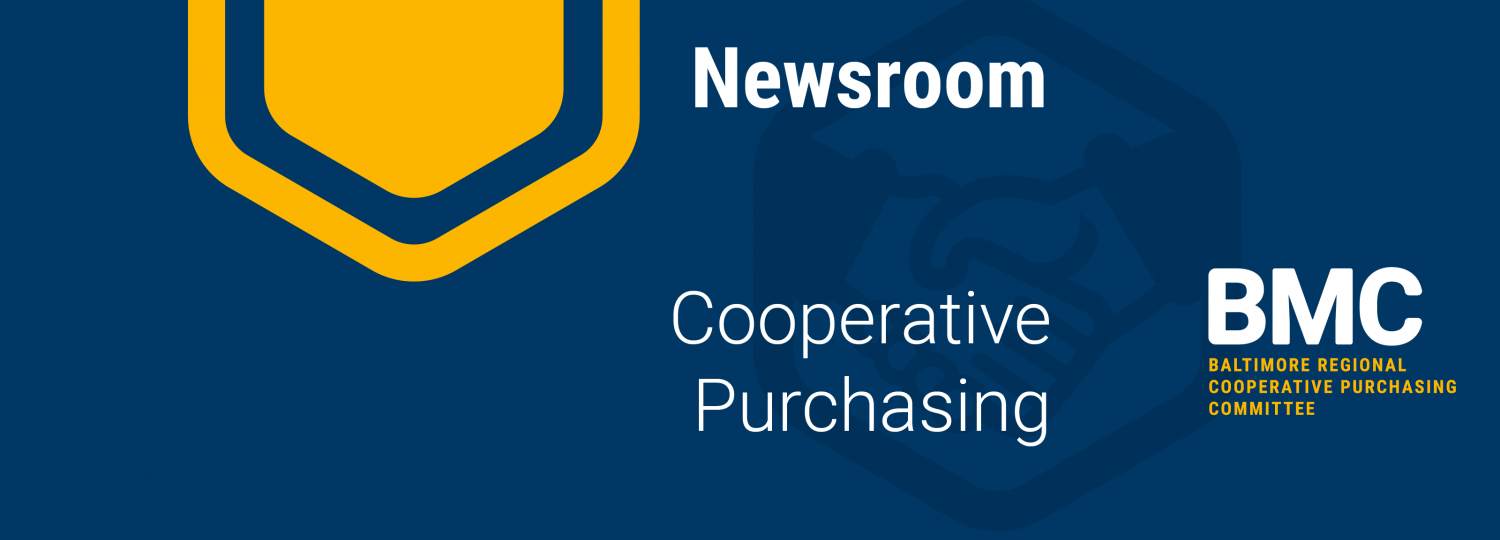
The COVID-19 pandemic continues to keep us apart. Many are staying at home, socially distancing and using personal protection equipment (PPE) when venturing out.
PPE has played a huge role in the response to the health crisis. Procuring this equipment during a time when supply was very low and demand was exponential has been a challenge that many experienced worldwide.
BMC's Director of Cooperative Purchasing, Debbie Groat, takes a deeper look at the supply chain for PPE, underscoring how it has changed throughout the pandemic. She also calls for the stabilization of a pricing structure for such material in an article she wrote for the MPAA Newsletter.
Read the article here:
Handling Price Escalators in an unstable supply chain
Escalators are used to encourage suppliers to participate in long-term contracts when price volatility would otherwise discourage participation with aggressive pricing. Escalators have been useful for a variety of reasons, such as fuel prices, trade tariffs, and under COVID19 where we have supply chain collapse due to soaring global demand for Personal Protection Equipment (PPE) and shortages in raw materials needed to manufacturer the PPE supplies. 3M’s N95 facemask that was normally priced between $0.50 - $0.60 each were coming in at the peak of COVID19 between $5.00 and $6.00. Standard fixed price contracting was out the door.
As emergency contracting begins to wane, we need competitive solutions for PPE requirements in the future. Based on the undependable supply chain during COVID19, a good price escalation clause and cooperative purchasing should be the procurement strategy that will garner the best pricing. The National Institute of Governmental Purchasing defines the Price Adjustment Clause:
“A clause in a contract allowing for adjustment in price in accordance with circumstances arising during the term of the contract. A provision that must be included in contracts requiring contractor certification of cost and pricing data stating that price, including profit or fee, shall be adjusted to exclude any significant sums by which the jurisdiction finds the price was increased because the contractor-furnished cost or pricing data was inaccurate, incomplete, or not current.”
This kind of clause requires thoughtful development and management to ensure an equitable contract. It also means that price adjustments are considered for escalation and de-escalation. While it may be more effort to maintain a contract with a price adjustment clause, it’s rewarded with more competition and competitors that give you their best price at the time of bid. Competitors are encouraged to give their best price because you have reduced some of the risk in bidding a long-term contract in a volatile market, such as PPE supplies. The following is an example of price adjustment clause considerations taken from the Federal Acquisition Department:
2-18.5 Fixed-Price Contract with Economic Price Adjustment
A fixed-price contract with economic price adjustment provides for upward and downward revision of the stated contract price upon the occurrence of specified contingencies. This type of contract establishes a basis for measuring fluctuations so that price adjustments are limited to contingencies beyond the supplier’s control and reflect actual market fluctuations. Upward adjustments are limited by establishing a reasonable ceiling, and provisions are included for downward adjustments when prices or rates fall below base levels established in the contract.
There are two types of economic price adjustments:
- Adjustments based on ACs of labor or materials — price adjustments based on actual increases or decreases in the costs of specified labor or materials during performance.
- Adjustments based on cost indexes of labor or materials — price adjustments based on increases or decreases in labor or material cost standards or indexes specifically identified in the contract.
Fixed-price contracts with economic price adjustment are appropriate when there is serious doubt about the stability of market or labor conditions during an extended period of performance and when contingencies that would otherwise be included in a FFP contract are identifiable and can be covered separately in the contract. Their usefulness is limited by the difficulties of administering them.
Fixed-price contracts providing for an economic price adjustment based on ACs of labor or materials must include Clause 2-28: Economic Price Adjustment — Labor and Materials, and fixed-price contracts providing for an economic price adjustment based on cost indexes of labor or materials must include Clause 2-29: Economic Price Adjustment (Index Method).”
The main reason for using a price adjustment clause is to discourage the bidder from setting their price high enough to offset any expected or unexpected future increases that are out of their control. COVID19 has raised a bidder’s concern over their ability to predict the “unexpected increases.” A best practice to drive your PPE bid prices down is to aggregate as much volume as possible through cooperative purchasing and use a price adjustment clause when it is reasonable to do so. An example of a Federal price adjustment clause is found in the Reference section below. Why Federal you ask? Well, since much of the PPE we are purchasing under COVID19 may be reimbursable by the Federal Government, it may be good to see what type of clause they find acceptable should we find ourselves in a similar situation in the future.
One final note about price adjustment clauses. Do not confuse the COVID19 market circumstances with your force majeure clause, that is normally used as protection against natural disasters or other catastrophes as most recently seen in the explosion in Beirut. Price adjustment clauses are needed for things such as tariffs and COVID19 supply chain collapse.
Debbie Groat, Chair
MPPA Cooperative Purchasing Subcommittee
Reference:
- https://www.fhwa.dot.gov/programadmin/contracts/ta50803.cfm
- https://www.nigp.org/docs/default-source/docs/education/OnlineDict/DictP.htm
- https://www.acquisition.gov/content/52216-4-economic-price-adjustment-labor-and-material Found below:
Economic Price Adjustment-Labor And Material (Jan 2017)
(a) The Contractor shall notify the Contracting Officer if, at any time during contract performance, the rate of pay for labor (including fringe benefits) or the unit prices for material shown in the Schedule either increase or decrease. The Contractor shall furnish this notice within 60 days after the increase or decrease, or within any additional period that the Contracting Officer may approve in writing, but not later than the date of final payment under this contract. The notice shall include the Contractor’s proposal for an adjustment in the contract unit prices to be negotiated under paragraph (b) of this clause, and shall include, in the form required by the Contracting Officer, supporting data explaining the cause, effective date, and amount of the increase or decrease and the amount of the Contractor’s adjustment proposal.
(b) Promptly after the Contracting Officer receives the notice and data under paragraph (a) of this clause, the Contracting Officer and the Contractor shall negotiate a price adjustment in the contract unit prices and its effective date. However, the Contracting Officer may postpone the negotiations until an accumulation of increases and decreases in the labor rates (including fringe benefits) and unit prices of material shown in the Schedule results in an adjustment allowable under paragraph (c)(3) of this clause. The Contracting Officer shall modify this contract (1)to include the price adjustment and its effective date and (2)to revise the labor rates (including fringe benefits) or unit prices of material as shown in the Schedule to reflect the increases or decreases resulting from the adjustment. The Contractor shall continue performance pending agreement on, or determination of, any adjustment and its effective date.
(c) Any price adjustment under this clause is subject to the following limitations:
(1) Any adjustment shall be limited to the effect on unit prices of the increases or decreases in the rates of pay for labor (including fringe benefits) or unit prices for material shown in the Schedule. There shall be no adjustment for-
(i) Supplies or services for which the production cost is not affected by such changes;
(ii) Changes in rates or unit prices other than those shown in the Schedule; or
(iii) Changes in the quantities of labor or material used from those shown in the Schedule for each item.
(2) No upward adjustment shall apply to supplies or services that are required to be delivered or performed before the effective date of the adjustment, unless the Contractor’s failure to deliver or perform according to the delivery schedule results from causes beyond the Contractor’s control and without its fault or negligence, within the meaning of the Default clause.
(3) There shall be no adjustment for any change in rates of pay for labor (including fringe benefits) or unit prices for material which would not result in a net change of at least 3 percent of the then-current total contract price. This limitation shall not apply, however, if, after final delivery of all line items, either party requests an adjustment under paragraph (b) of this clause.
(4) The aggregate of the increases in any contract unit price made under this clause shall not exceed 10 percent of the original unit price. There is no percentage limitation on the amount of decreases that may be made under this clause.
(d) The Contracting Officer may examine the Contractor’s books, records, and other supporting data relevant to the cost of labor (including fringe benefits) and material during all reasonable times until the end of 3 years after the date of final payment under this contract or the time periods specified in subpart 4.7 of the Federal Acquisition Regulation (FAR), whichever is earlier.
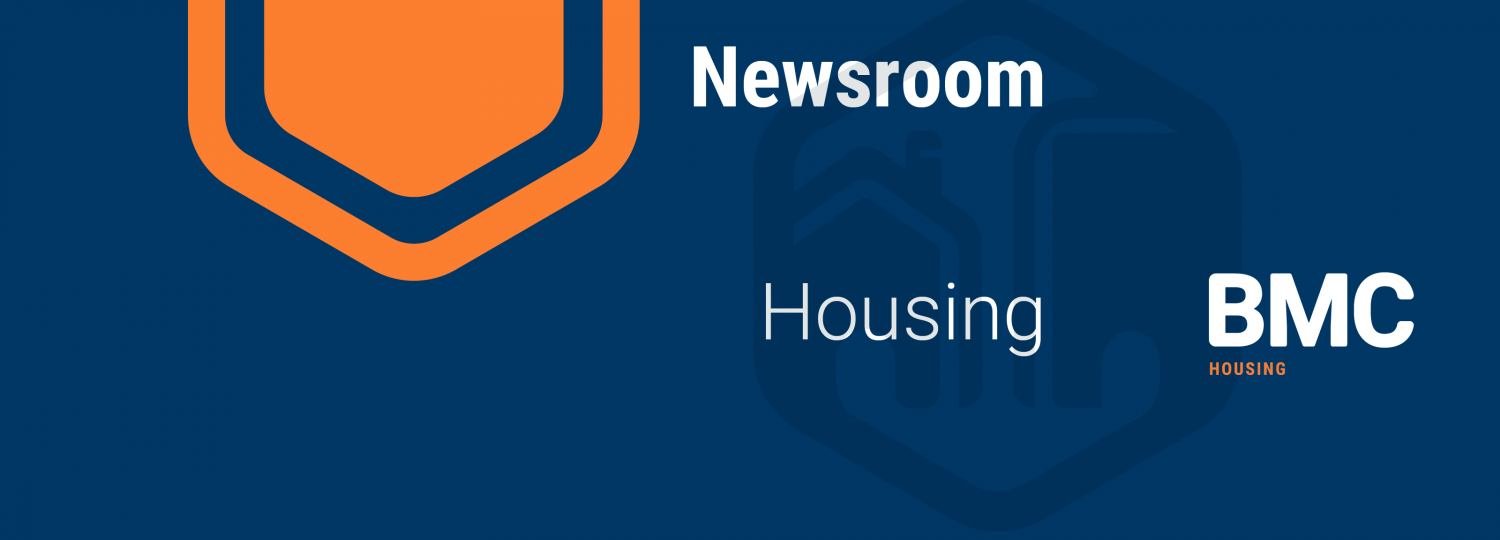
In the midst of a national reckoning over racial injustice, BMC member jurisdictions have finalized a new analysis and plan to address housing-related disparities by race and other characteristics protected under the federal Fair Housing Act. The study documents significant disparities in homeownership, housing cost burden, and access to affordable rental housing and high-performing public schools, while detailing specific actions local jurisdictions and the region can take to address those disparities. The new regional fair housing plan is being released despite the federal administration’s recent announcement that it is removing the requirement that local jurisdictions receiving federal housing funding develop plans to address and ameliorate policies that lead to disparate housing impacts for protected classes.
“Every family deserves to have a place to call home where they can access quality educational and career opportunities — where they can achieve their hopes and dreams for their families,” said Johnny Olszewski, Baltimore County Executive and BMC Board Chair. “I’m proud of my partners in local government for coming together to chart a course to provide more equitable housing options for families across our region.”
Participating jurisdictions included the Cities of Annapolis and Baltimore along with Anne Arundel, Baltimore, Harford, and Howard Counties and the public housing authorities (PHAs) that serve them. The local governments and PHAs were assisted by BMC and consultants Root Policy Research and International Development and Planning.
“At a time when our whole nation is confronting persistent racial injustice, our region, with the support of BMC, has taken the lead in addressing inequities in housing,” said Steuart Pittman, Anne Arundel County Executive, whose housing agency chaired BMC’s Regional Fair Housing Group through much of the plan development process. “These inequities affect so much, whether it is where our children attend school or our probability of experiencing poverty and trauma.”
This plan marks the third time Baltimore-area jurisdictions and housing authorities have come together voluntarily to address these issues. “Together we are emphasizing the need to both invest in our older, urban and inner ring suburban communities, and to create affordable housing options in high opportunity areas,” said Amy Wilkinson, Executive Vice President for Fair Housing at the Housing Authority of Baltimore City, who took over as chair of the Regional Fair Housing Group in July.
The new 2020 document, known as an Analysis of Impediments to Fair Housing Choice, took nearly two years to develop and involved a robust stakeholder engagement process to identify fair housing issues, analyze data and recommend solutions. “This process brought together a unique set of stakeholders from around the region to confront disparities that hold our region and our country back,” said Cleveland Horton, Deputy Director of the Maryland Commission on Civil Rights who chaired the AI Stakeholder Work Group. “Now the true test will be implementing these action steps over the coming five years.”
Key regional action steps over the coming five years include:
- Facilitating the development of 2,300 units of affordable housing over the next five years, including 1500 units for families, located in safe communities with access to high quality schools, and the other 800 contributing to comprehensive revitalization plans to bring opportunity to more struggling communities. Many of these units will be accessible to people with disabilities, as well.
- Regional support for transformational investments in areas of racially concentrated poverty and other areas in need of reinvestment.
- Supporting effective enforcement of Maryland’s new law that prohibits housing discrimination based on source of income, so people can live wherever their own means and assistance makes it financially possible. Baltimore-area jurisdictions will coordinate support for the new Fair Housing Action Center of Maryland, which seeks to provide effective private-sector enforcement of fair housing laws.
- Engage lenders in tackling persistent mortgage and homeownership racial disparities in the region that were highlighted in this fair housing analysis.
In addition, local governments will take action in their own jurisdictions that will help facilitate racial and economic integration and address housing-related wealth disparities. As a small sample of those steps:
- Anne Arundel County will invest in the creation of affordable and accessible rental homes in Communities of Opportunity, especially in transit zones, and will also work to establish inclusionary housing policies and laws.
- City of Annapolis will develop a policy regarding Payment in Lieu of Taxes (PILOT) and explore other incentives to encourage affordable housing construction in the next three years.
- Baltimore City will create 1,250 new rental units over five years, at least half in opportunity areas and the remainder as part of transformational revitalization or in gentrifying areas.
- Baltimore County will expand incentives for property owners and investors to build new apartment buildings or substantially rehabilitate existing buildings for occupancy by lower-income families in areas of opportunity.
- Harford County will continue to foster opportunities for homeownership throughout the County including housing counseling and down payment assistance for first time homebuyers.
- Howard County will invest in older communities to support revitalization, preserve affordable housing, and promote mobility for housing choice voucher clients through counseling and payment standards.
The federal Fair Housing Act prohibited discrimination on the basis of race in 1968, but before then the federal government often actively promoted racial segregation, most notably through New Deal “redlining” maps that guided government policy for decades afterward. That policy subsidized wealth-building home construction and mortgages overwhelmingly in communities restricted to white residents, while discouraging investments in racially integrated communities and communities of color. As a result, Congress in 1968 required the U.S. Department of Housing and Urban Development (HUD) and its grantees to “affirmatively further” the goals of the law, working to undo the damage of past policies. Baltimore-area jurisdictions have voluntarily coordinated to prepare these analyses regionally since 1996.
The full document and appendices can be found here.
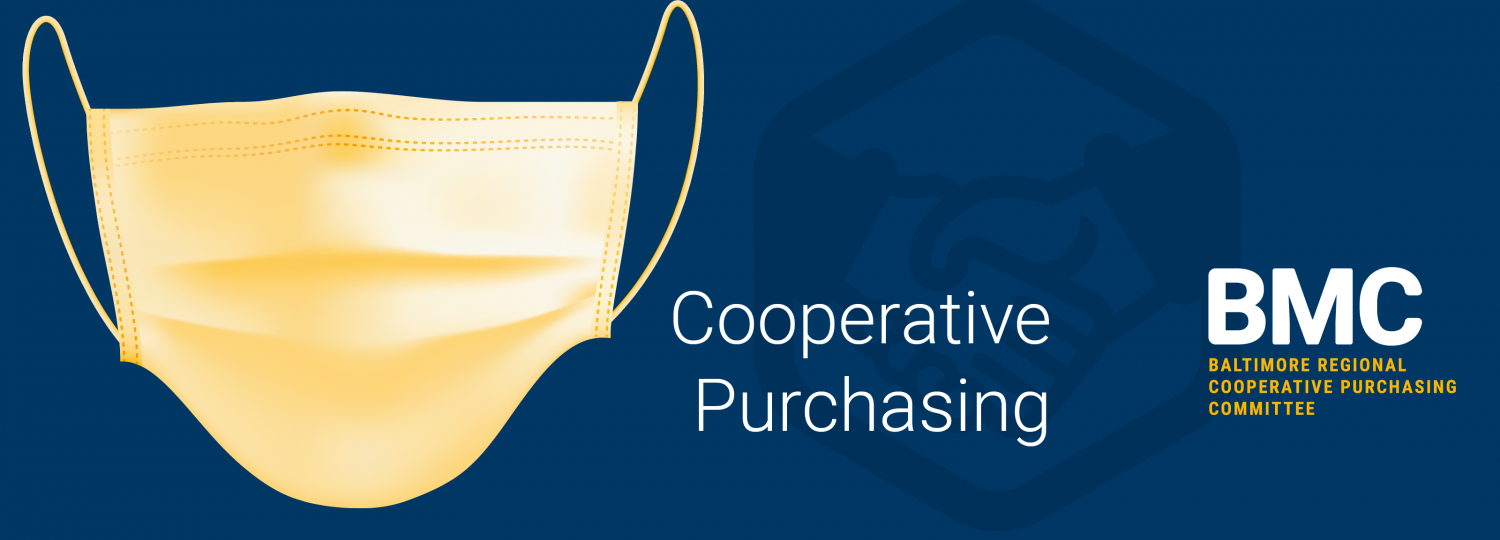
Over the last several months, BMC helped organizations in the region procure much needed personal protection equipment (PPE), including masks, gloves, cleaning supplies and more. Through a cooperative purchasing agreement offered by BMC and W.B. Mason, local groups have gained access to affordable PPE when they needed it most.
In the midst of the COVID-19 crisis, many nonprofits remained open – or were struggling to re-open. Several faced both unplanned costs to purchase necessary supplies and equipment, as well as trouble locating available products.
Utilizing CARES Act Coronavirus Relief Funds from Anne Arundel County, Arundel Community Development Services (ACDS) was able to order supplies accessed through BMC’s cooperative purchasing program to fulfill the needs of 20 nonprofit service providers in the county. Orders ranged from cleaning products, sanitizers, and masks to gloves and disposable thermometer covers.
“Community-based nonprofits are on the front lines of serving our most vulnerable residents every day,” said Steuart Pittman, Anne Arundel County Executive. “I’m proud of our partners at BMC and ACDS for connecting these organizations to the resources they need in order to continue their essential missions.”
Several local groups reported experiencing supply shortages when shopping for PPE. Many were grateful for the assistance, including the Boys & Girls Club of Annapolis & Anne Arundel County.
“In a world of ‘back orders’ and ‘out of stock’ we can't begin to tell you how amazing it was to be contacted by ACDS about PPE so that we can prepare to reopen safely,“ said Jennifer Logratteria, Boys & Girls Club of Annapolis & Anne Arundel County Development Director. “With so many roadblocks in our path as we navigate these unprecedented times, thank you for being a beacon of light for our Clubs and our county's youth.”
The Housing Authority of the City of Annapolis also utilized the contract to buy masks for their residents.
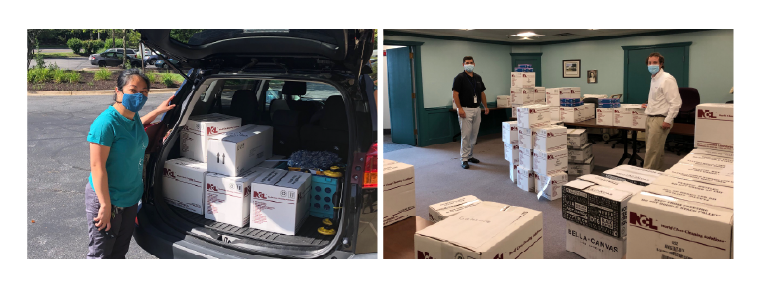 |
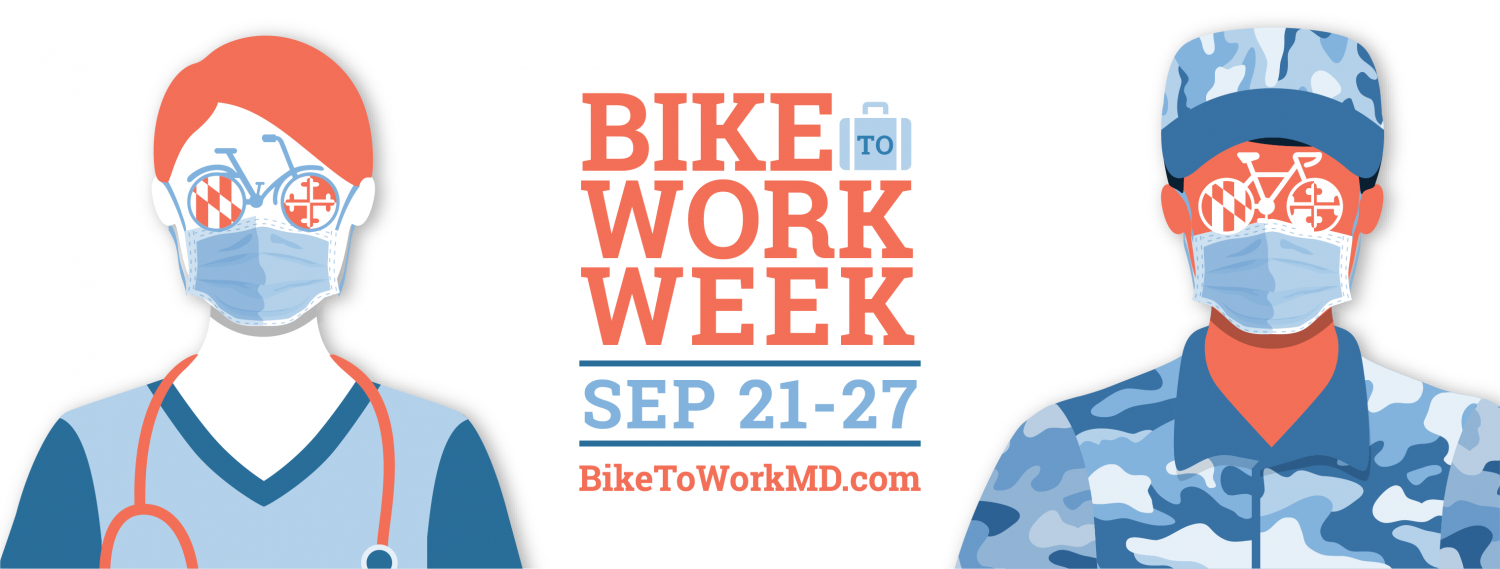
To ensure the safety of riders, BMC is gearing up for a COVID-safe Bike to Work 2020 from September 21-27. Combined with participation in the Love to Ride Cycle September Global Challenge as part of the Central MD community, the usual rallies and pit stop gatherings will be replaced with online networking and encouragement for all riders, and even more prizes!
Cyclists who register for Bike to Work 2020 and ride during the week of September 21-27 can pick up a free t-shirt at over a dozen area bike shops (open to the first 2,500 registrants) AND have a chance to win prizes.
Not commuting to work? No problem! The Cycle September Global Challenge is a fun, friendly, and free competition between workplaces, clubs, and individuals to see who can get the most people cycling in September – especially new riders.
Riders can earn points for every mile they ride, every day they ride, and every new person they encourage to ride. Individuals only have to ride for ten minutes anytime, anywhere (for fun, fitness, transportation or even indoors) to be eligible for prizes and help their team climb the leaderboard.
Register for Bike to Work 2020 from August 7 – September 19 @ biketoworkmd.com
Join the Cycle September Global Challenge as a member of the Love to Ride Central MD community by following these 3 easy steps:
- Register at lovetoride.net/centralmd
- Join your company or group or register a new group for Cycle September
- Log rides via the website or app or link to your favorite bicycling app to win prizes
Sign up for Cycle September before it starts on September 1, and you'll be in the drawing for an early bird prize. You can win an e-bike from Charge or a local prize pack!
About Bike to Work Week
The Baltimore Metropolitan Council organizes an annual Bike to Work Day celebration in the region. The event, which was previously scheduled for May 15th, was postponed, then converted to a virtual event, in light of COVID-19 restrictions.
Bike to Work Week is a campaign that celebrates bicycling as a healthy commuting option, while promoting public awareness of its safety and environmental benefits. Bike to Work Week helps raise awareness of the rules of the road for drivers, pedestrians and cyclists, and highlights the need to improve bicycle facilities to improve safety.
About Love to Ride Central MD
The Baltimore Metropolitan Council has partnered with Love to Ride to bring more fun, more community, and more inspiration to get more people riding. Love to Ride is a biking encouragement website and app free to anyone who lives or works in the Central MD region.
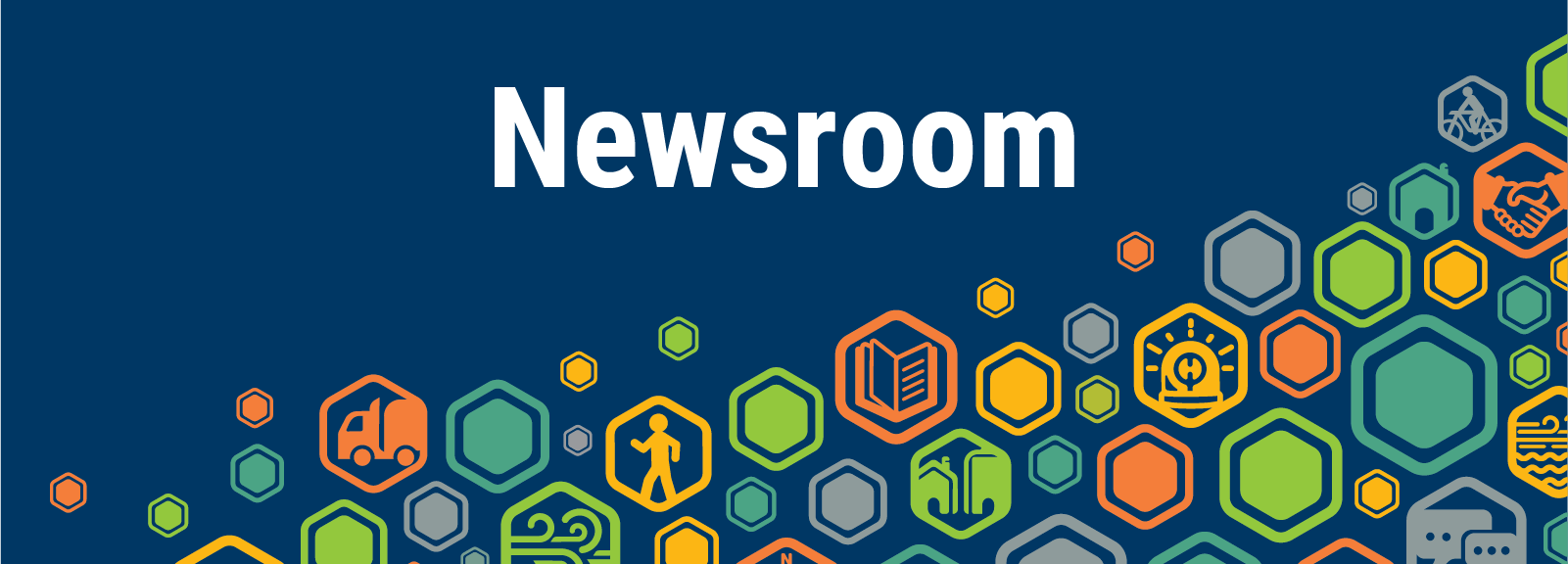
During the recent Firefighter Safety Stand Down week, June 14 to 20, BMC staff member Eileen Singleton worked closely with Patrick Rooney, MDOT SHA CHART Operations Training Manager, to hold 13 sessions of a 1-hour Traffic Incident Management refresher course. The courses, originally scheduled to take place in person, were instead virtual in response to the global pandemic.
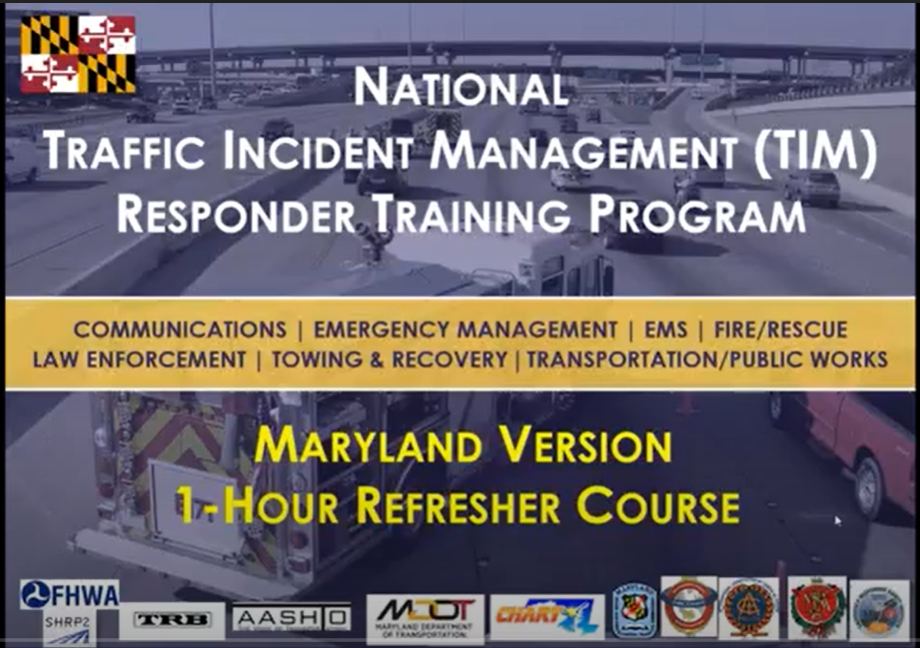
Rooney prepared the 1-hour refresher by selecting key concepts from the 4-hour national Traffic Incident Management Responder Training Program. The primary goal of both the longer course and the refresher is responder safety – reminding responders of the safest ways to arrive, park, and work at traffic incident scenes so everyone goes home at the end of their shift. Over 125 responders received training through the thirteen sessions. Responders were from multiple response disciplines and from all parts of Maryland.
While congestion and the number of crashes have decreased during the pandemic, crash data shows that overall crashes are still happening with rates of less severe crashes slightly decreasing and rates of the most severe crashes increasing (fatal and severe injury crashes). One theory for the relative increase in crash severity is that less traffic leads to less congestion and therefore people can, and do, drive faster. So travelers are reminded to be extra cautious while driving and follow the law to Move Over (or slow down if you cannot move over) for emergency responders and other workers at incident scenes.

The Baltimore Regional Transportation Board (BRTB), as the metropolitan planning organization for the Baltimore region, seeks public comments through Friday, July 17 on a new section of the Patapsco Regional Greenway in Howard and Baltimore Counties.
In 2017, the BRTB approved a concept plan for the Patapsco Regional Greenway. Now they are seeking your input on the Elkridge to Guiness route.
Details about the comment period and how to provide comments are available below.
About the Patapsco Regional Greenway
The Patapsco Regional Greenway maps the main alignment of a 40-mile, shared-use trail running through the Patapsco Valley from Baltimore’s Inner Harbor to Sykesville in Carroll County. The trail, if completed, would pass through or near the communities of Cherry Hill, Baltimore Highlands, Halethorpe, Elkridge, Catonsville, Ellicott City, Oella, Daniels, Woodstock, Marriottsville, and Sykesville.
About the Elkridge to Guinness Project
This project will provide preliminary design drawings for a 1.2 to 2.5 mile segment of the Patapsco Regional Greenway connecting Patapsco Valley State Park, Main Street in Elkridge, and the Guinness Open Gate Brewery.
The goals of this project are to:
- build a low-traffic bicycle and pedestrian facility
- improve access to the nearby natural environment
- create a new gateway to downtown Elkridge to support economic development
Choosing the Best Pathway
Earlier this year, the design team studied the area and developed three options, also called “alignment alternatives,” for the Elkridge to Guinness connection and the Patapsco River crossing.
Each of the three potential trail placements include a Patapsco River crossing. All alternatives would also pass through the numerous wetlands and floodplains of the Patapsco River Valley. Federal and State regulations provide protections for the river and its associated wetlands and floodplains, so the design team looked for options that would minimize impacts to these environmental resources.
The BRTB seeks feedback on three possible trail routes. Highlights are below.
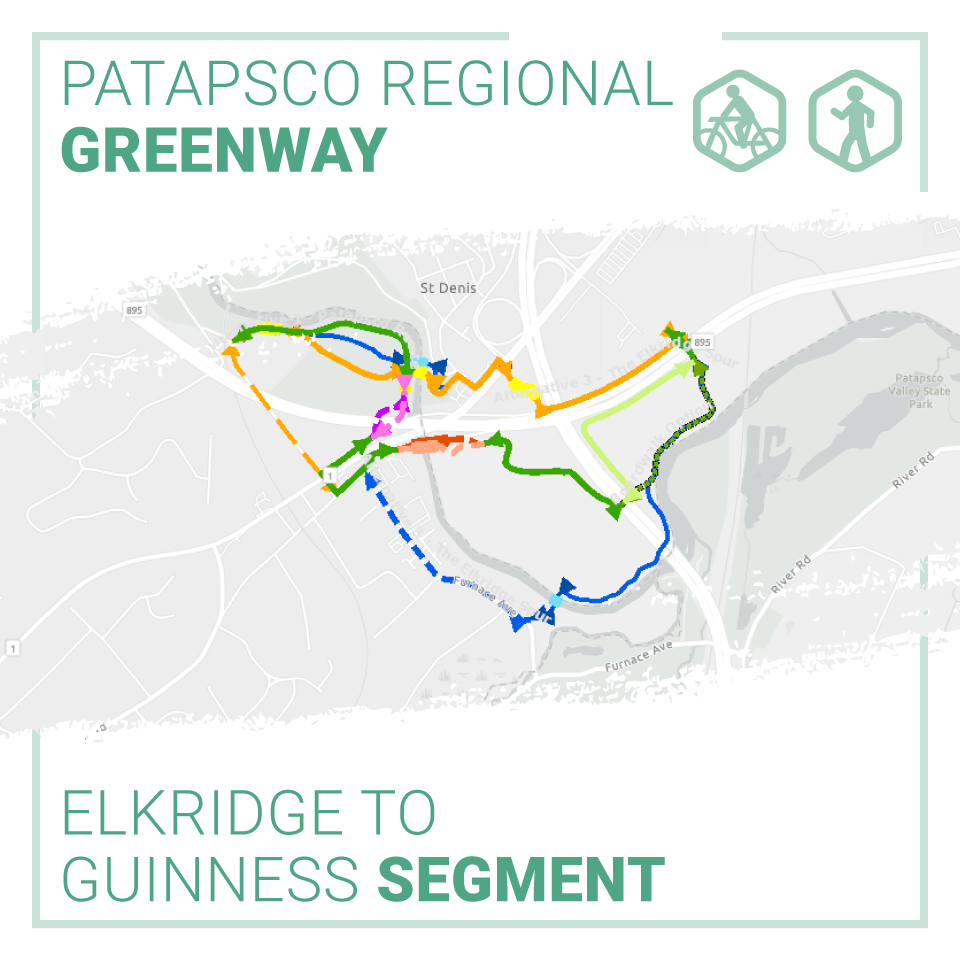
- Alternative 1: The Patapsco Route – The Patapsco Route has several options to take trail users through the floodplain of the Patapsco River and into Historic Elkridge via a bridge over the Patapsco River. Changing Main Street in Elkridge to a one-way road would provide enough space for a low-stress separated bike lane. Length: 1.8 Miles; Cost Range: $2.5 to $4.2 Million.
- Alternative 2: The Northern Link – The Northern Link efficiently ties the area of Guinness Open Gate Brewery to the Thomas Viaduct inside the Patapsco Valley State Park. Sharrows, also known as shared lane markings, along the low-volume Levering Avenue would allow trail users to come into Historic Elkridge. Length: 1.2 Miles; Cost Range: $1.9 to $2.4 Million
- Alternative 3: The Elkridge Spur – The Elkridge Spur provides efficient connections between the Guinness Open Gate Brewery, Historic Elkridge and the Park, with an optional loop trail that would also provide an opportunity to enjoy the serenity of the Patapsco River. Length: 2.5 Miles; Cost Range: $3.8 to $4.3 Million
Based on your input, and the input of our project partners, the project team will choose a preferred alignment and complete a preliminary design. Once 30% design is completed, Howard and Baltimore Counties will apply for a grant from the Maryland Department of Transportation (MDOT) to complete the design.
View the alignment options in our StoryMap | Listen to an overview about the project
Share Your Thoughts
The public is invited to share their feedback on the three design alternatives from Monday, July 6 through Friday, July 17, 2020.
There are four ways you can comment:
- View the StoryMap and take our survey @ https://www.surveymonkey.com/
r/98F8M6Q - Email your thoughts to comments@baltometro.org
- Call us at 410-732-0500 x 1042 and leave a voicemail with your feedback
- Share your thoughts via Twitter at @BaltoMetroCo | @BmoreInvolved | #BRTBlistens
For more information:
Contact Sheila Mahoney, senior transportation planner, by email at smahoney@baltometro.org, or by phone at 410-732-0500 x 1042.
Notice
The Baltimore Regional Transportation Board operates its programs and services without regard to race, color, or national origin in accordance with Title VI of the Civil Rights Act of 1964, and other applicable laws. Appropriate services can be provided to qualified individuals with disabilities or those in need of language assistance who submit a request at least seven days prior to a meeting. Call 410-732-0500.

BMC staff are proud to participate in the Chesapeake Bay Foundation’s (CBF) ‘Walk the Watershed’ event this year. Throughout the month of June, our team will work toward a goal of traveling 200 miles in support of a healthier waterway. This target represents the approximately 200-mile-long Chesapeake Bay. Staff will also seek donations on behalf of CBF as an element of this campaign.
Team members contribute to the 200-mile goal by tracking and reporting their individual walking, bike riding, and running distances. Photos and videos document and share this experience publicly.
To date, the team has reached its 200-mile goal and raised over $600 in donations.
Part of BMC's mission is to improve our region’s quality of life – of which the health of the Bay plays an important role. A clean Chesapeake Bay provides a healthy place for fish and shellfish to grow, and a more beautiful and safe place to boat and recreate. The Bay’s waters also provide vital economic benefits to the tourism and seafood industry that are entrenched in our region’s history and future.
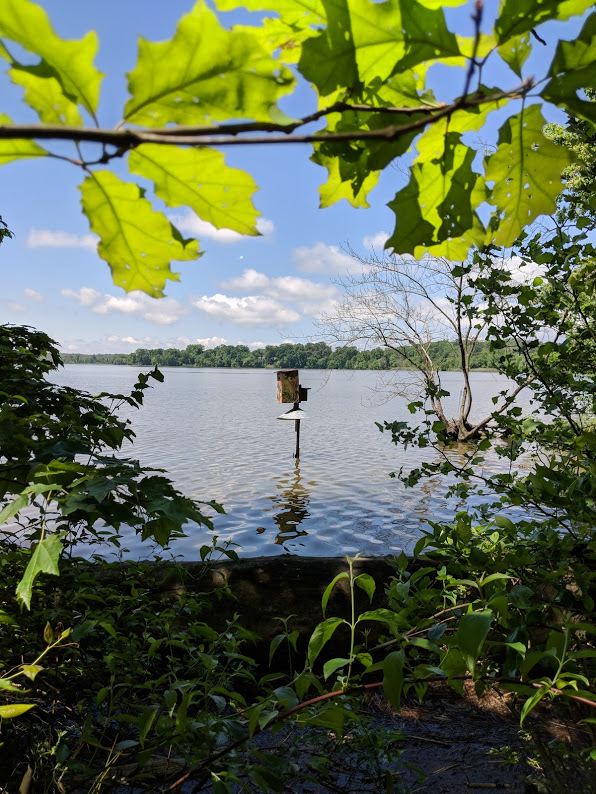 |
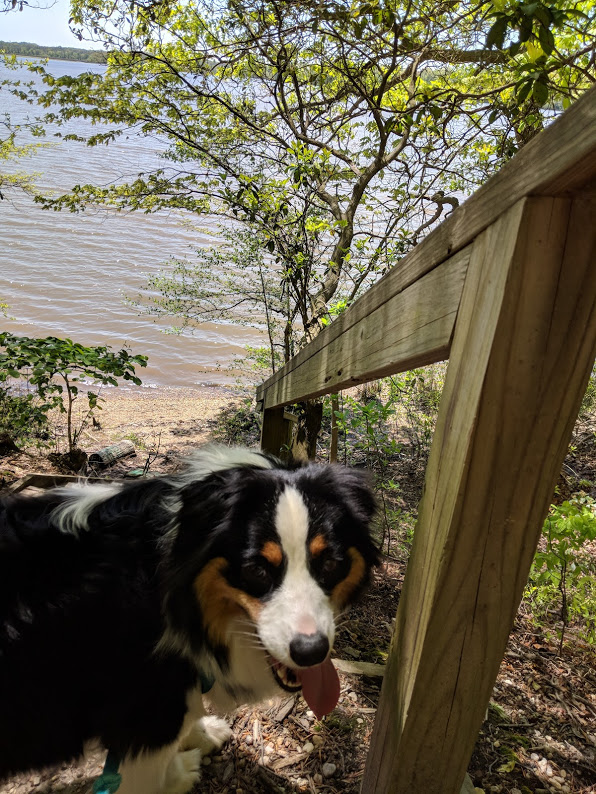 |
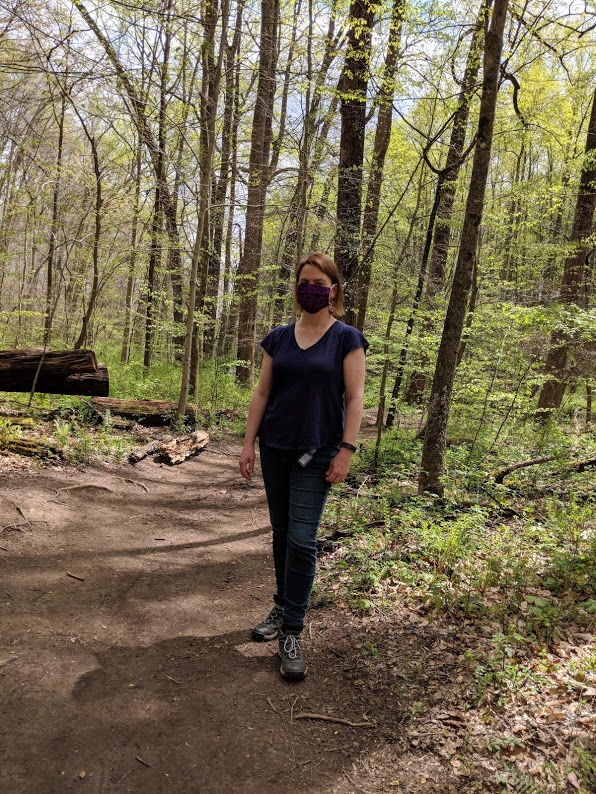 |

The protective measures taken to stop the spread of COVID-19 have caused countless disruptions to the systems and standards so many have worked to build.
COVID-19 has emphasized the prioritization of safety measures and abrupt shifts in supply, demand, materials and resources, causing many to adapt their operating procedures.
BMC’s Director of Cooperative Purchasing, Debbie Groat, authored an article for the Maryland Public Purchasing Association (MPAA) Newsletter. In the article, Groat, who also serves as Chair of the Cooperative Purchasing Subcommittee for MPAA, details the changes in operating procedures for cooperative purchasing post COVID-19.
The article examines the shifts made in cooperative purchasing to meet the needs of the region during a time where demand was overwhelming.
See the below article excerpted from the MPAA Newsletter:
Post COVID19 – Changes in Operating Procedures - Cooperative Purchasing
Emergency management prepares for unexpected emergency situations that may arise. Risks are evaluated and plans are put into place at every level of government. The cooperation between the Federal Emergency Management Agency (FEMA), the Maryland Emergency Management Agency (MEMA), and local emergency managers is well coordinated. This collaboration and cooperation is what makes unforeseen emergencies more manageable. When it comes to purchasing in emergencies, contractors and contracts are lined up and ready to be used to provide the supplies and services needed to resolve the emergency. When these resources are exhausted, we look to other cooperative contracts and on-demand purchasing. That strategy worked very well for regional emergencies, such as the Howard County floods or Baltimore City riots. But the COVID19 pandemic was global and raised the bar for the need to globally cooperate and collaborate.
According to the FEMA COVID-19 Pandemic Operational Guidance for the 2020 Hurricane Season May 2020: “As a result of the COVID-19 pandemic, the Nation is facing unprecedented challenges as we respond to additional disasters, anticipate emergent incidents, and prepare for the 2020 hurricane season. Although the operating environment has changed, the Federal Emergency Management Agency’s (FEMA) mission of helping people before, during, and after disasters remains the same. Federal, state, local, tribal, and territorial (SLTT) officials, along with the private sector and nongovernmental organizations (NGO), must partner together to fulfill their respective missions and help disaster survivors. As the Nation continues to respond to and recover from COVID-19 while posturing for the coming hurricane season, emergency managers must continue to operate under a framework of a locally executed, state managed, and federally supported approach to incident stabilization.”
New challenges in mid and post-COVID19 stabilization reared their ugly head because this time, the highest risk was a supply demand that was impossible to meet under our current operating practices. Let’s look at one operating procedure that may see some drastic changes, Just-In-Time (JIT) ordering.
Credit for the origin of JIT practices was traced back in the 60’s to Japan and Toyota Manufacturing. It did not become popular in the United States until the 80’s. According to Wikipedia; The main reasons prompting production facilities to use JIT included: inventory reduction, labor cost reduction, space reduction, stock reduction, production increase, quality improvement, throughput time reduction, and standard hours reduction. In short, the relationship between the raw material supplier and the product manufacturer was developed so the manufacturer could depend more heavily on the raw materials being available precisely when needed or just-in-time. This dependency on the supply chain became stronger and more reliable over time. Beyond manufacturing, government adopted JIT for office, custodial, and MRO supplies. Warehouses became smaller or nonexistent, and stock on hand was minimized. There were tremendous gains in efficiency and reductions of the cost of holding unnecessary stock. The trust in the supplier’s ability to meet our demands was strong. That is until COVID19.
When COVID19 hit in the United States, we followed other countries already dealing with the virus. The demand for PPE was quickly soaring on a global level exceeding normal stocking levels. Anne Arundel County’s Emergency Management Department studied the PPE usage in two area hospitals and found that their COVID19 burn rates for PPE supplies were 2 to 3 times the normal usage.
The global demand for personal protective equipment stressed the supply chain to unimaginable levels. And, frankly, it broke under the pressure. Government turned to unlikely sources, such as distilleries and clothiers, to modify their operations to make the products that were needed, such as hand sanitizer and non-surgical gowns. We saw soaring transportation costs and manufacturing plants become overwhelmed to the degree that their distributors refused additional orders due to the high risk of not being able to fulfill the order. Equally challenging, was the dependency on foreign manufacturing for these PPE supplies when they were desperately needed in that country. Product was delivered to the tarmac only to be purchased, on site, for a higher price. The supply chain was in chaos and government could not depend on just in time, near in time or anytime delivery.
Wikipedia goes on to say, “Natural and man-made disasters will disrupt the flow of energy, goods and services. The down-stream customers of those goods and services will, in turn, not be able to produce their product or render their service because they were counting on incoming deliveries "just in time" and so have little or no inventory to work with. The disruption to the economic system will cascade to some degree depending on the nature and severity of the original disaster. The larger the disaster the worse the effect on just-in-time failures.”
“The COVID-19 pandemic has caused disruption in JIT practices, with various quarantine restrictions on international trade and commercial activity in general interrupting supply while lacking stockpiles to handle the disruption; along with increased demand for medical supplies like PPE (Personal Protective Equipment) and ventilators, and even panic buying, including of various domestically manufactured (and so less vulnerable products) like panic buying of toilet paper, disturbing regular demand. This has led to suggestions that stockpiles and diversification of suppliers should be more heavily focused.”

BMC’s Housing Policy Coordinator, Dan Pontious, joined Delegate Brooke Lierman, Anne Arundel County Executive Steuart Pittman, Public Justice Center Attorney Charisse Lue and VP of Pennrose Properties and president of the Maryland Affordable Housing Coalition Ivy Dench-Carter for a May 28 discussion on housing Marylanders during and after COVID-19.
The “Briefing with Brooke” presented a current state of affairs and update on efforts concerning affordable housing, eviction prevention and sustainability of housing for modest-income Marylanders as the threat of evictions and foreclosures loom in the wake of COVID-19.
Delegate Lierman set the stage for the conversation with a brief introduction to County Executive Pittman, a member of BMC’s board of directors. In his briefing, Pittman explained the eviction prevention and rental assistance program for Anne Arundel County, which is funded by a combination of local funds and resources made available to local and state governments by the recent federal CARES Act. Residents must provide documentation that shows they are facing eviction and have had a loss of income. Funds through this program are submitted directly to property owners or managers to cover rent. The County has received more than 750 calls for assistance already.
Pontious spoke about BMC’s efforts working with Anne Arundel and other Baltimore-area jurisdictions to urge the State via an April 8 letter to allocate its own CARES Act funds toward helping renters and homeowners in Maryland. He also emphasized the scope of the economic threat COVID-19 presents. When renters cannot pay rent, they lose their homes and that loss of income hurts the ability of many property owners to pay their mortgages. Pontious warned that with so many people effected, the pandemic has the potential to trigger a record-breaking housing and economic crisis.
The briefing was a lively discussion that also addressed housing inequities, eviction rates, tenants’ right to counsel in housing court and more. In lieu of a statewide solution, many jurisdictions have taken the lead in preventing the spread of disease by helping residents remain safely in their homes during this public health crisis.
BMC continues to be a resource for the region. As discussed in the briefing, we look forward to continued information-sharing and learning among our local governments and housing agencies who are leading the housing response on COVID-19. We will continue to work with them to encourage State support of these crucial efforts.

The Maryland Highway Safety Office (MHSO) organized a safety seminar on Thursday, April 30, for members of National Highway Traffic Safety Administration (NHTSA) Region 3, which includes Delaware, District of Columbia, Maryland, Pennsylvania, Virginia, and West Virginia. BMC staff presented the LOOK ALIVE regional pedestrian and bike safety campaign and law enforcement training in support of the education campaign. Over 120 participants from across the region attended the online seminar.
Jeff Dunckel with the MHSO provided an overview of statewide pedestrian fatalities, which have been on an increasing trend since 2015, rising from 99 to 133 in 2018. During the same period, the Baltimore region went from 48 to 68 pedestrian fatalities. Between 2014 and 2018, three jurisdictions in the Baltimore region (Baltimore City, Baltimore County and Anne Arundel County) were among the top five for number of pedestrian involved injury/fatal crashes in Maryland. The same three are also among the top five for pedestrian involved fatalities by jurisdiction.
Bala Akundi, Principal Transportation Engineer at BMC, and Kenna Swift Williams of Sherry Matthews Group, provided an overview of the development of the LOOK ALIVE campaign starting in early 2019 through its launch in June and over the fall/winter. The campaign began as two video-spots featuring signal woman – a personification of the walk signal – and conveyed messages to drivers, pedestrians and cyclists. The 2020 campaign included media pitches for law enforcement activations in November that garnered significant media coverage including a WBAL feature with BMC Executive Director Mike Kelly.
The COVID-19 pandemic postponed elements of the campaign, such as the spring enforcement wave. One of the last Look Alive events was on March 7 at the B’More Healthy Expo at the Baltimore Convention Center. This joint event with Baltimore City DOT and MDOT SHA featured a Virtual Reality (VR) challenge.
BMC, in partnership with Baltimore County Police Department and MHSO, organized four law enforcement-training workshops between May 2019 and February 2020 and trained over 100 officers from across the region/state on how to conduct pedestrian enforcement activations. Following each of these sessions were multiple waves of enforcement that resulted in positive media coverage, citations and warnings.
BMC is looking forward to working with MHSO and local partners in continuing the LOOK ALIVE campaign during the rest of the year and into 2021.
